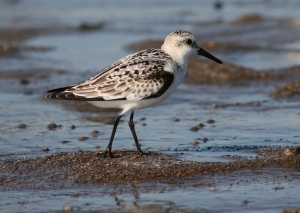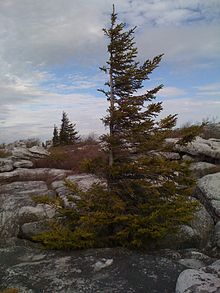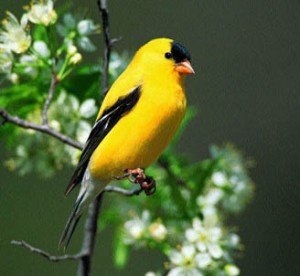Guest post by Bryan MacKay
 The dog days of summer may be here, but there are still wonderful reasons to get outside in Maryland this month. For inspiration, we offer the following August excerpt from Bryan MacKay’s A Year across Maryland, his week-by-week guide to enjoying the natural world in JHUP’s home state.
The dog days of summer may be here, but there are still wonderful reasons to get outside in Maryland this month. For inspiration, we offer the following August excerpt from Bryan MacKay’s A Year across Maryland, his week-by-week guide to enjoying the natural world in JHUP’s home state.
Canada Geese Molting
Midsummer is when our resident Canada geese seem to be at their most obnoxious, lingering continually on lawns and in parks and leaving immense amounts of their droppings everywhere. Beaches harboring geese sometimes have to close in August due to high fecal bacteria counts. These problems occur because geese are flightless for about a month, as they grow a new set of feathers to replace the worn and damaged ones of the past year. During this time, Canadas like to loaf and feed on expansive areas of short grass where food is abundant and predators are easily sighted. In addition, they prefer to have water nearby, to which they can escape from terrestrial predators. Canada geese are large animals and are mostly vegetarians, so it takes a lot of forage to support them, especially during molting, which generates high metabolic demands. Because their digestive systems are relatively inefficient at extracting nutrients from that forage, the volume of fecal matter is large. Geese may defecate up to twenty-eight times a day, so watch your step.
Where to see Canada geese this week: Lawns of college campuses such as UMBC, open-space parks, even urban ones such as Patterson Park in Baltimore City, cemeteries such as Woodlawn Cemetery in Baltimore, and golf courses like Forest Park in Baltimore City. Any large expanse of grassy open space with water nearby, anywhere in Maryland, will likely host Canada geese in late summer.
Shorebird Migration Under Way
 In places across Maryland from the Atlantic beaches to reservoir mud flats, shorebirds are pausing on their southward migration. It seems amazing that the important business of mating and raising young is already over for the year and that this year’s offspring are mature enough to participate in the migration. Most of these same birds passed through here, northbound, just a bit over two months ago. During the southbound transition, however, there is not that sense of urgency that the need to mate and raise young imparted then, and birds may linger here in good habitat, departing at their leisure. Among the most familiar of these shorebirds are sanderlings, those small, active white and gray shorebirds that chase advancing and retreating waves along our Atlantic beaches, gleaning tiny crabs and other invertebrates. Sanderlings breed, nest, and raise young on the tundra of the High Arctic between mid-May and mid-July. They arrive on our ocean beaches shortly thereafter. While most eventually overwinter below the equator, a few will linger with us through the winter.
In places across Maryland from the Atlantic beaches to reservoir mud flats, shorebirds are pausing on their southward migration. It seems amazing that the important business of mating and raising young is already over for the year and that this year’s offspring are mature enough to participate in the migration. Most of these same birds passed through here, northbound, just a bit over two months ago. During the southbound transition, however, there is not that sense of urgency that the need to mate and raise young imparted then, and birds may linger here in good habitat, departing at their leisure. Among the most familiar of these shorebirds are sanderlings, those small, active white and gray shorebirds that chase advancing and retreating waves along our Atlantic beaches, gleaning tiny crabs and other invertebrates. Sanderlings breed, nest, and raise young on the tundra of the High Arctic between mid-May and mid-July. They arrive on our ocean beaches shortly thereafter. While most eventually overwinter below the equator, a few will linger with us through the winter.
Where to see shorebirds this week: Assateague Island beaches, Chesapeake Bay Environmental Center, Hart-Miller Island, Poplar Island, and almost any reservoir with exposed mud flats.
Red Spruce
 Growing at high elevations in the Appalachian mountains, red spruce endure, even thrive, in conditions more like Canada’s than the mid-Atlantic’s. Now, in midsummer, cone buds are just starting to form. At one time, forests dominated by red spruce covered much of a high plateau forming what is now the Dolly Sods Wilderness and the Roaring Plains Wilderness in eastern West Virginia. Colonial-era explorers reported red spruce up to twelve feet in diameter. In the first decade of the twentieth century, however, the area was extensively clearcut and virtually all the marketable timber was removed. The forest floor, covered by several feet of humus, dried out without the shelter of trees, and soon wildfires burned all plant and animal life, down to bare rock. Since then, red spruce and other trees have recolonized this area, but the harsh weather has slowed growth. Red spruce on exposed sites exhibit “flagging”: branching only on the side away from prevailing winds. Red spruce tolerate a wide variety of soil conditions, from the thin dry soils on mountaintops to the soggy acidic soils of frost pocket bogs. Unfortunately, since the 1960s, red spruce have not been thriving in their subalpine home. Air pollutants, including sulfur dioxide, nitrogen oxides, and ozone are thought to be responsible, perhaps in combination with acid rain, for their decline.
Growing at high elevations in the Appalachian mountains, red spruce endure, even thrive, in conditions more like Canada’s than the mid-Atlantic’s. Now, in midsummer, cone buds are just starting to form. At one time, forests dominated by red spruce covered much of a high plateau forming what is now the Dolly Sods Wilderness and the Roaring Plains Wilderness in eastern West Virginia. Colonial-era explorers reported red spruce up to twelve feet in diameter. In the first decade of the twentieth century, however, the area was extensively clearcut and virtually all the marketable timber was removed. The forest floor, covered by several feet of humus, dried out without the shelter of trees, and soon wildfires burned all plant and animal life, down to bare rock. Since then, red spruce and other trees have recolonized this area, but the harsh weather has slowed growth. Red spruce on exposed sites exhibit “flagging”: branching only on the side away from prevailing winds. Red spruce tolerate a wide variety of soil conditions, from the thin dry soils on mountaintops to the soggy acidic soils of frost pocket bogs. Unfortunately, since the 1960s, red spruce have not been thriving in their subalpine home. Air pollutants, including sulfur dioxide, nitrogen oxides, and ozone are thought to be responsible, perhaps in combination with acid rain, for their decline.
Where to see red spruce this week: In Maryland, Mt. Nebo Wildlife Management Area in Garrett County has two small red spruce bogs. More extensive stands of red spruce are found in the Dolly Sods Wilderness in West Virginia.
Goldfinches Nesting
 American goldfinches are among our most familiar and wellloved birds of garden and backyard, but two features of their life history are perhaps less well known. First, goldfinches are with us year-round, the males trading their bright yellow and black breeding plumage for a drab brown outfit during the colder months. Yes, some of those boring LBJs—little brown jobs—at your feeder in winter are the same fl ashy beauties you loved so much at midsummer. Second, goldfinches nest later in the year than any other Maryland bird, and they are just now starting to raise young. The reason for this unusually late breeding cycle may be that it takes much of late spring and early summer for plants to flower and set seed, and goldfinches are almost entirely granivorous, seed eaters. Their favorite foods, the seeds of thistle, coneflower, and black-eyed susan, do not develop until the heat of midsummer.
American goldfinches are among our most familiar and wellloved birds of garden and backyard, but two features of their life history are perhaps less well known. First, goldfinches are with us year-round, the males trading their bright yellow and black breeding plumage for a drab brown outfit during the colder months. Yes, some of those boring LBJs—little brown jobs—at your feeder in winter are the same fl ashy beauties you loved so much at midsummer. Second, goldfinches nest later in the year than any other Maryland bird, and they are just now starting to raise young. The reason for this unusually late breeding cycle may be that it takes much of late spring and early summer for plants to flower and set seed, and goldfinches are almost entirely granivorous, seed eaters. Their favorite foods, the seeds of thistle, coneflower, and black-eyed susan, do not develop until the heat of midsummer.
Where to see goldfinches this week: Any well-stocked backyard thistle feeder, statewide.
Bluefish Visit Chesapeake Bay
Estuaries like Chesapeake Bay are among the richest ecosystems in the world, and by midsummer life there is flourishing and prolific. This bounty attracts summer visitors, fish who arrive to feed on local residents like menhaden and bay anchovies. Among these predator fish are Spanish mackerel, red drum, and perhaps the ultimate finned predator, bluefish. Blues are voracious feeders, operating in schools to eat almost any fish smaller than they are. Bluefish sometimes kill prey even when they are satiated, and have even been known to accidentally strike at human bathers. Fishermen seeking bluefish on the Bay look for roiled water and vortexes of gulls feeding on shreds of prey fish left by the intense feeding frenzy. Blues fight hard when caught on hook and line. Wire leaders are often used when angling for blues, since they can use their razor-sharp teeth to bite through those made of string. Bluefish are most common in the lower half of the Bay in late summer. The ones found there tend to be smaller, about a foot long, than those caught in the Atlantic off Maryland beaches. Mature bluefish spawn offshore in midsummer and overwinter off Florida. The species has a worldwide distribution. Blues can live for a dozen years and can weigh up to twenty pounds.
Where to see and catch bluefish this week: Join a charter boat out of any port south of the Bay Bridge, or visit with people fishing the surf at Assateague Island.
Bryan MacKay is a senior lecturer emeritus in the Department of Biological Sciences at the University of Maryland, Baltimore County. He is the author of A Year across Maryland: A Week-by-Week Guide to Discovering Nature in the Chesapeake Region; Hiking, Cycling, and Canoeing in Maryland: A Family Guide; and Baltimore Trails: A Guide for Hikers and Mountain Bikers.

